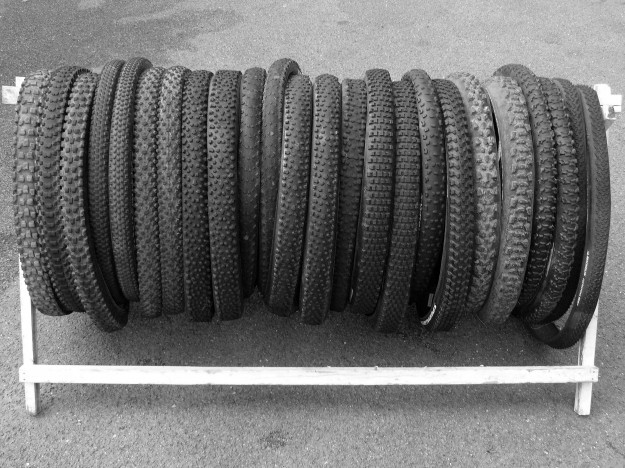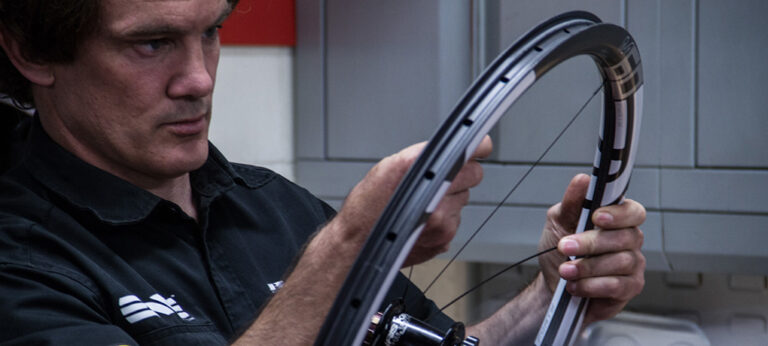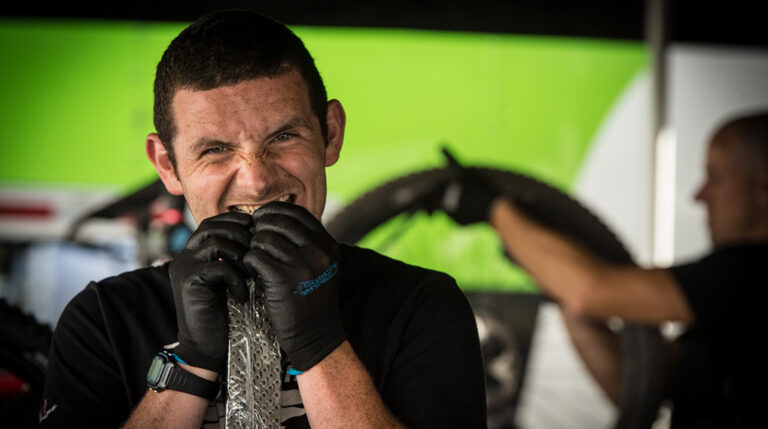
Words by Colin Dennis
With such a vast choice of tyres out there, it’s no wonder that so many questions start ‘What tyres for…’ In this guide, we’ll explain the features of modern tyres to help you choose the right rubber.
There’s a saying about gear and the weather: ‘there’s no such thing as bad weather – just the wrong choice of clothing’.
The same is true of tyres. We often fit the wrong ones. Most of us want to fit tyres that work on every surface, then we curse the bike, or tyres, when things go awry. We travel miles to get to a bike park in Wales or Scotland only to find that our super sticky mud tyres are pretty much useless on the rocky descents and climbs.
What do we do? Do we buy a set of tyres for each location (having learnt our expensive lesson) or do we go for the compromise? This can be a daunting task.
Whether you’re riding a 26in-wheeled bike or a 29er, or going tubeless, it’s the grip that matters. Our essential guide to cross country tyres is here to help you through the mire.
Where do you ride?
Tyre selection is probably one of the hardest of choices to make when fitting out your bike and by and far the greatest influence on the quality of your ride and handling of the bike. The weather conditions here on our compact island constantly change with the seasons and more often than not – four seasons in one day.
Whether you live in the north, south, east or west, you just don’t have the luxury of simplicity with terrain and weather. Almost anywhere within the UK you might encounter mud, sand, rocks, roots, tarmac, and grass. Sometimes, that’ll be in a single ride, or in some cases just a few hundred metres. If you want to take the fit and forget route with your tyres, then compromise might ultimately be the name of the game.
Tyre construction: threads per inch (TPI)
As the name suggests TPI refers to the thread count in a tyre’s casing. A low TPI means the manufacturer has used thicker threads to weave the tyre casing, making it more durable, but stifer. High TPI indicates thinner threads, making the tyre lighter and more pliable.
Tyre construction: Siping
Sipes are the small incisions on, or in, a tyre tread, usually in the knobs. Siping a tyres creates more working edges, boosting traction on pretty much any surface. Shallow cut sipes stay firmer under heavy loads and hard braking.
Tyre construction: Terraced treads
Tyres that feature stepped edges on the tread offer a progressive feel as you turn into a corner. The idea here is that in the initial stages of a turn the tread is supple and conforms to the terrain, as more pressure is applied at the apex of the turn, the tread becomes stiffer to provide support.





